DC Output Quality
For those of you that are curious as to some of the reasoning and equipment behind our PSU testing program here at TheFPSReview, we have put together an introduction for you that shares a lot of the behind the scenes of the program. This program is based on what the author developed at [H]ardOCP and utilizes the equipment bequeathed to the author by Kyle Bennett. The testing we are conducting today is exactly as described in that document and will continue with our examination of the DC Output Quality.
Control Test Graphing

This image is the blank background control test on an unused connector from our SM-8800 during the testing of the FSP Dagger 600W. This lets us determine what the background noise looks like during testing.
120v Input

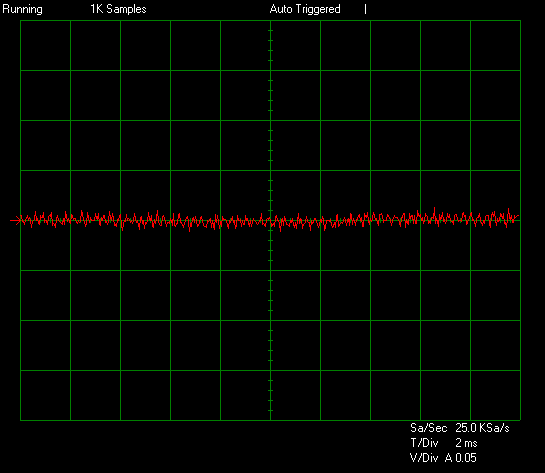
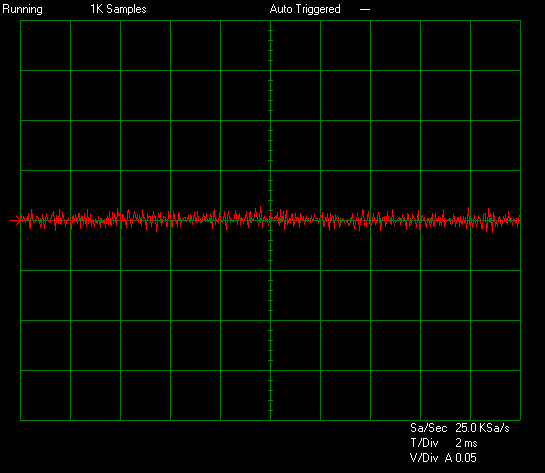
100v Input
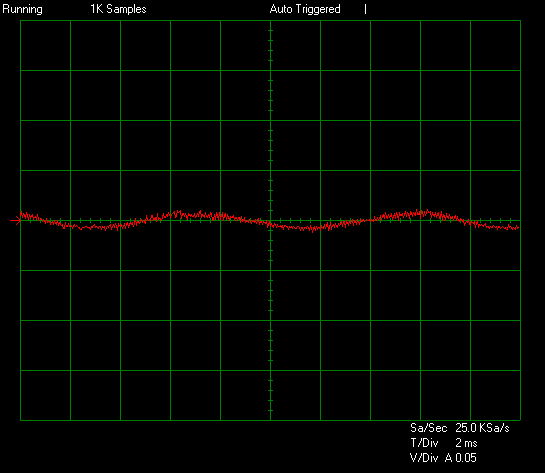
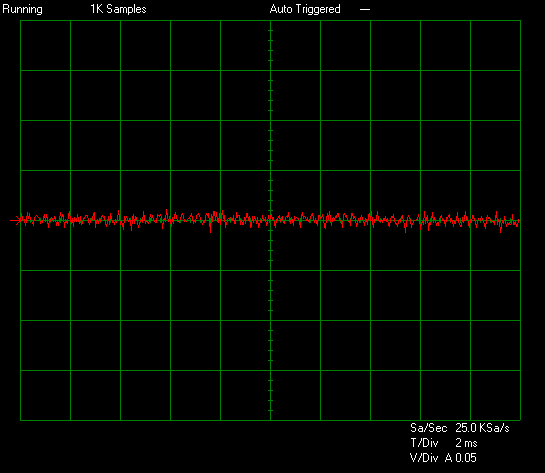

Test #1 is equal to approximately 25% of the rated capacity of the FSP Dagger 600W at 45c. This makes Test #1 equal to 149W by loading the 12v rail to 10a, the 5v rail to 2a, the 3.3v rail to 1a, the +5vsb to 2a, and the -12v to 0.3a. The FSP Dagger 600W is starting off a bit active on all of the rails we monitor. The 12v and 5v rails are peaking at ~20mV of ripple/noise while the 3.3v rail is peaking at ~25mV of ripple/noise.
120v Input
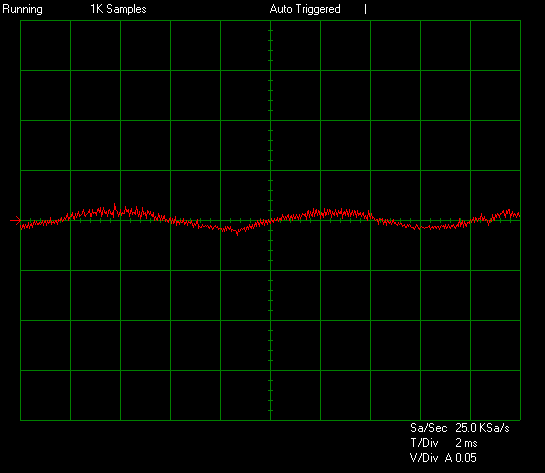
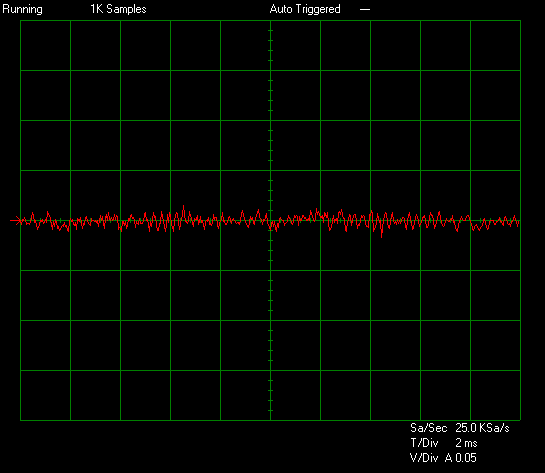
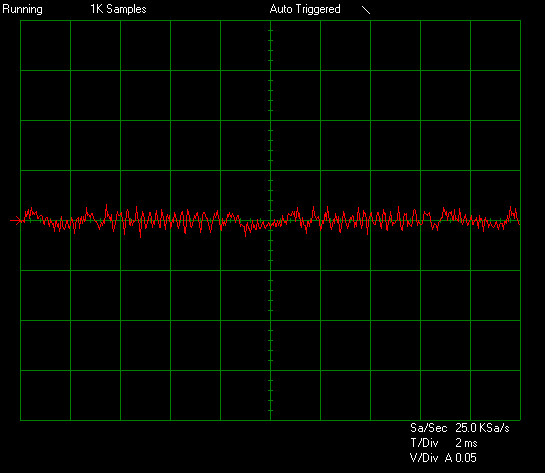
100v Input

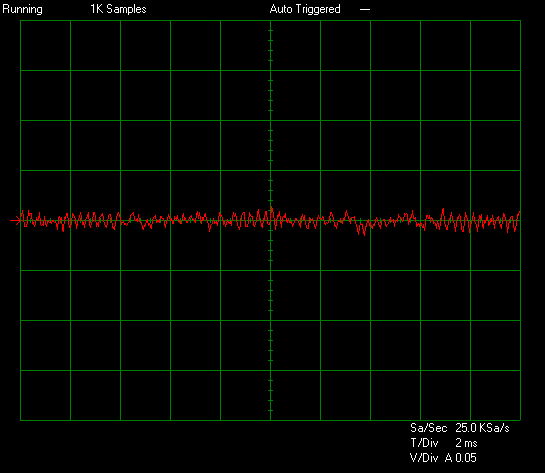
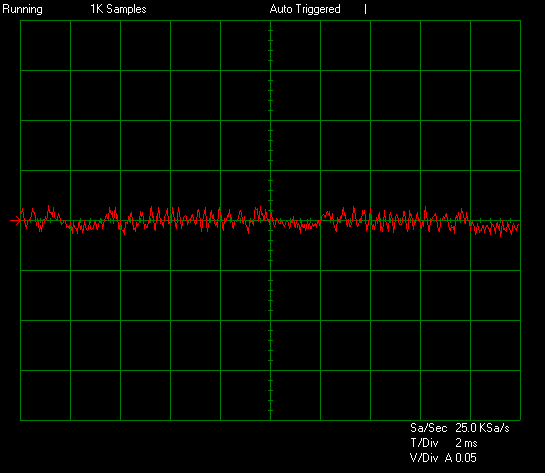
Test #2 is equal to approximately 50% of the rated capacity of the FSP Dagger 600W at 45c. This makes Test #2 equal to 299W by loading the 12v rail to 21a, the 5v rail to 4a, the 3.3v rail to 3a, the +5vsb to 2a, and the -12v to 0.3a. Test #2 sees only minor changes as the 12v and 3.3v rails are coming in at ~30mV of ripple/noise while the 5v rail is coming in at ~25mV of ripple/noise.
120v Input
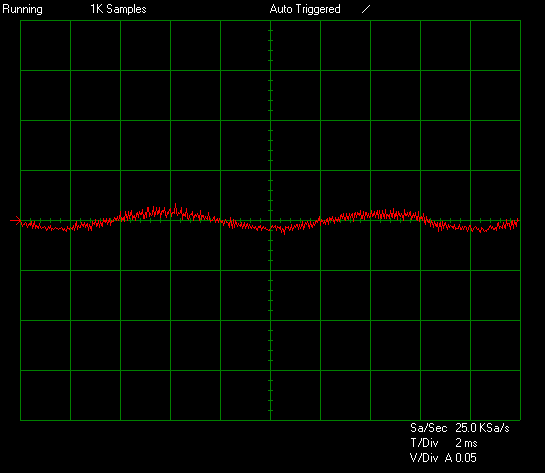
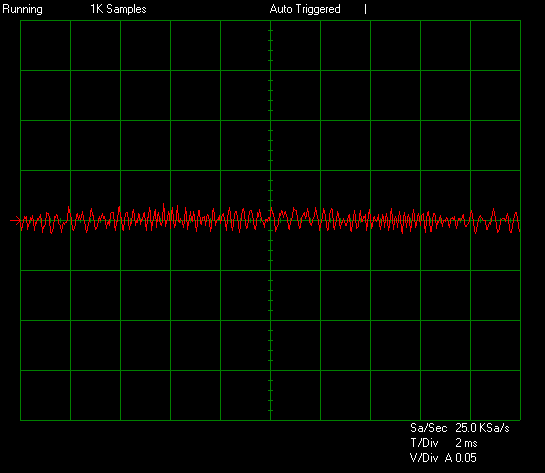

100v Input

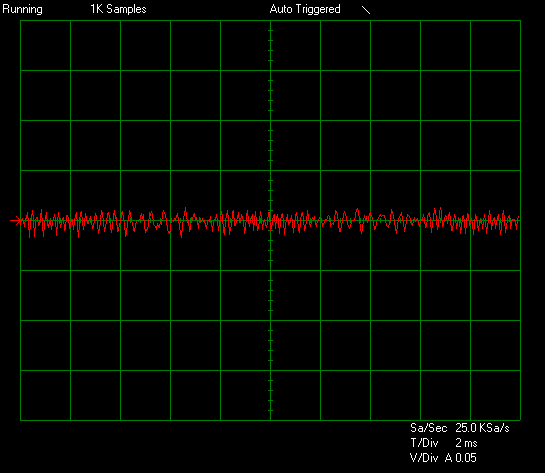
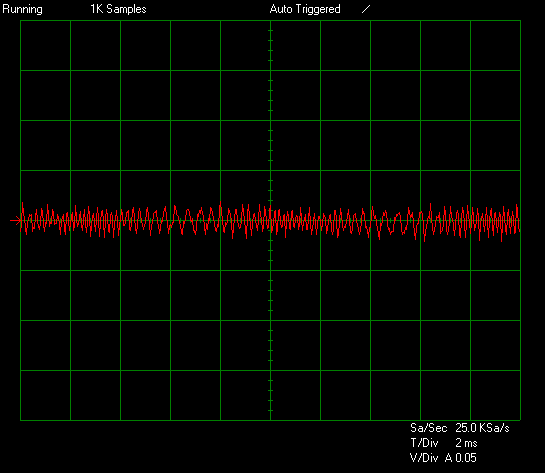
Test #3 is equal to approximately 75% of the rated capacity of FSP Dagger 600W at 45c. This makes Test #3 equal to 458W by loading the 12v rail to 33a, the 5v rail to 6a, the 3.3v rail to 4a, the +5vsb to 2a, and the -12v to 0.3a. Test #3 sees the 12v and 3.3v rails come in at ~30mV of ripple/noise again while the 5v rail hit ~25mV of ripple/noise.
120v Input
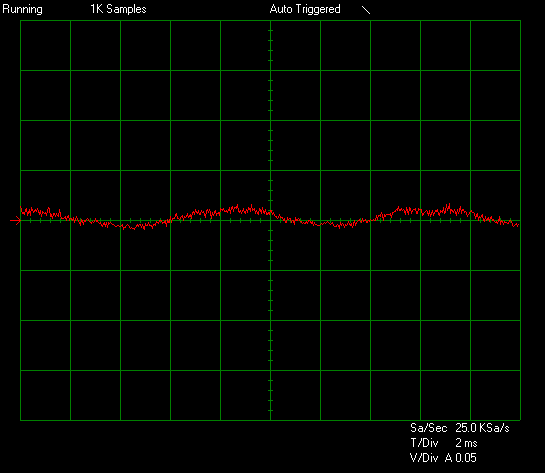
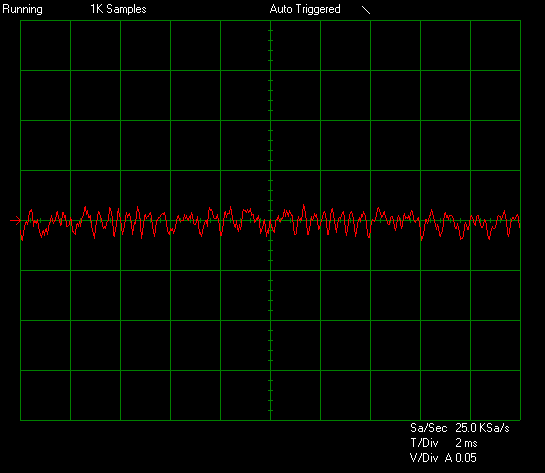
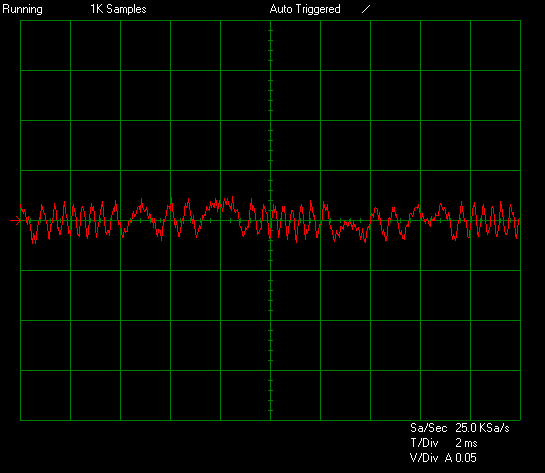
100v Input
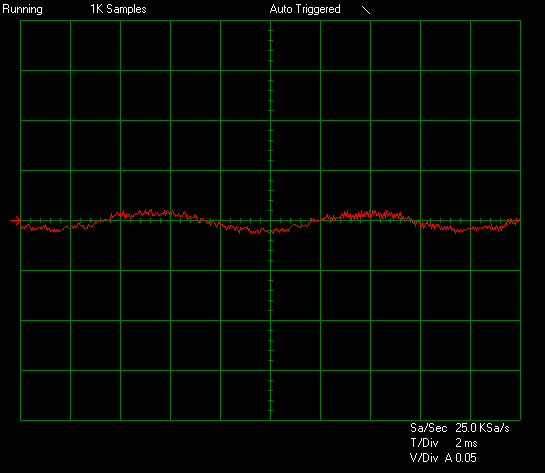

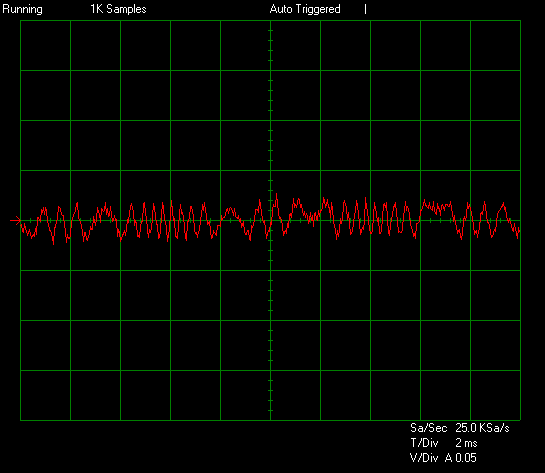
Test #4 is equal to approximately 100% of the rated capacity of the FSP Dagger 600W at 45c. This makes Test #4 equal to 613W by loading the 12v rail to 47a, the 5v rail to 3a, the 3.3v rail to 2a, the +5vsb to 2a, and the -12v to 0.3a. In the final regular test, we see the 12v rail peaking at ~25mV of ripple/noise while the minor rails are peaking at ~30mV of ripple/noise (5v rail) or ~40mV of ripple/noise (3.3v rail).
Torture Test

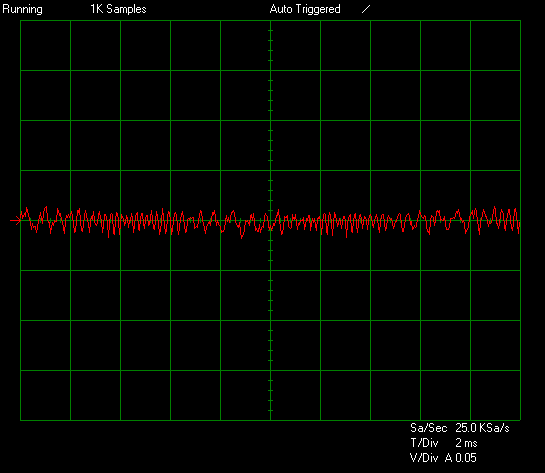
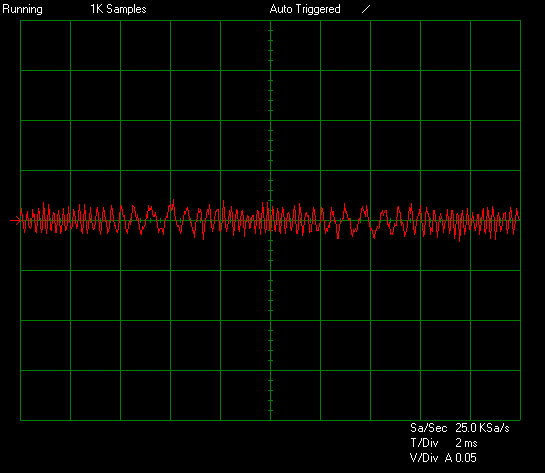
The Torture Test is equal to approximately 80% of the rated capacity of the FSP Dagger 600W at 45C. This makes the Torture Test equal to 490W by loading the 12v rail to 35a, the 5v rail to 7a, the 3.3v rail to 5a, the +5vsb to 2a, and the -12v to 0.3a. At the end of the Torture Test, we see the 12v rail peaking at ~25mV of ripple/noise while the 5v rail is peaking at ~30mV of ripple/noise and the 3.3v rail is peaking at ~35mV.
DC Output Quality Summary
The overall DC Output Quality of the FSP Dagger 600W is in specification. The ripple/noise values started the day off a bit active across the board and grew from there. Overall, the Dagger 600W ended up posting a peak trace amplitude on the 12v and 5v rails of ~30mV while the 3.3v rail hit ~40mV of ripple/noise. None of these values exit the ATX12v specification limits as some other samples of early run units have shown. However, the ~40mV value on the 3.3v rail is hitting 80% of the limit, with that being just ~10mV away from the limit by absolute value, which is not a great result. The ~30mV peak of the 5v rail is also not great but not as big of an offender. All in all, this unit did stay in specification, and it is an SFX unit which has its own constraints, so we can’t fail it today and we would not say that something “had” to be reworked in this unit. However, if this could be reworked in a v2.0 that would certainly make this unit more competitive. Let’s move on now and see how all of this wraps up!
